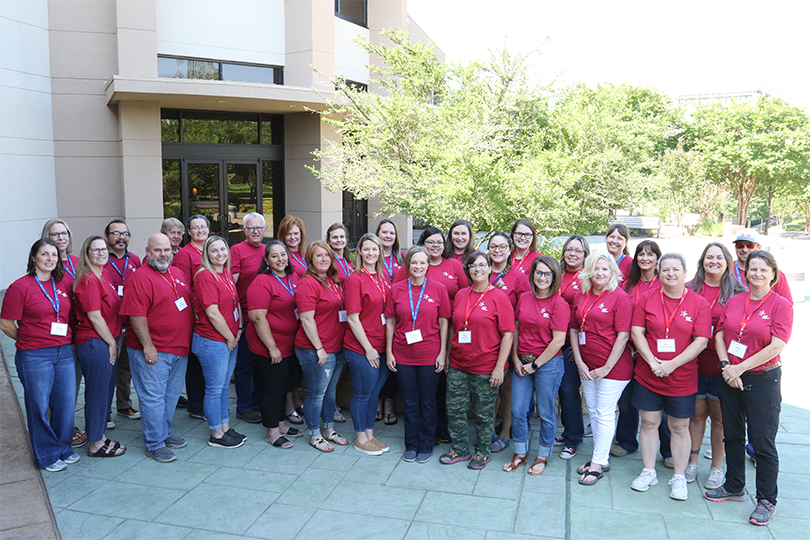By Jennifer Whitlock
Field Editor
Teachers from across Texas grew their agricultural knowledge and cultivated techniques to incorporate agriculture into the classroom at this year’s Texas Farm Bureau (TFB) Summer Ag Institute.
During the four-day professional development event June 14-17 in Waco, the educators toured farms, ranches and agribusinesses in the Central Texas area. They also participated in hands-on activities to replicate in their own classrooms and heard from experts on topics important to Texas’ vibrant agricultural sector.
They also visited a facility that creates livestock feed rations and met with a rural veterinarian to learn about livestock feed, animal care and more.
“The Summer Ag Institute is almost a week of hands-on, interactive learning to really drive home the agricultural concepts they’re learning about,” Jordan Walker, TFB associate director Organization Division Educational Outreach, said. “Going to these farms and ranches and different ag-related businesses and learning how natural resources play a role in agriculture helps teachers really begin to understand in a concrete way and take that back to their students this fall.”
The group traveled to Waco Wetlands, where they learned about water conservation and water testing. During a tour of the wetlands, water samples were drawn to illustrate how wetlands help filter lakes and rivers to keep ecosystems healthy.
Conservationists from the U.S. Department of Agriculture’s Natural Resources Conservation Service (NRCS) also talked about the importance of soil health to agriculture. The participants learned about cover crops, rotational grazing and other conservation practices farmers and ranchers engage in to ensure the best use and care of their land.
Farm tours
In Cameron, the teachers visited the Livestock Nutrition Center, where feed is custom blended for ranchers according to their herd’s needs. During a tour of the facility, the group learned how byproducts of human food and fiber production—like cottonseed, beet pulp and peanut hulls—are a quality sources of nutrition for livestock.
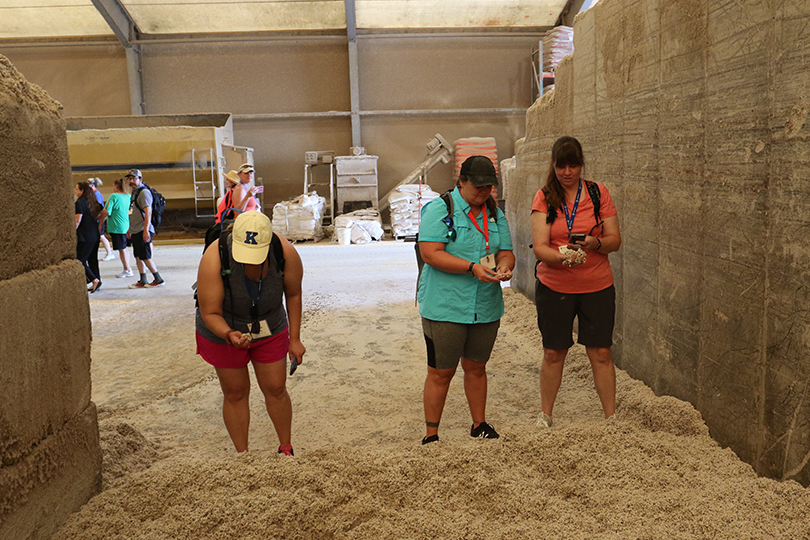
The educators toured 44 Farms, a large-scale black Angus cattle ranch. Director of Customer Experience James Burks explained how the operation produces top-quality beef cattle genetics for a variety of purposes including seedstock, herd improvement and feeder calves. He also discussed their direct-to-consumer beef sales, as well as their efforts to bring beef to restaurants and Walmart stores through an exclusive partnership program.
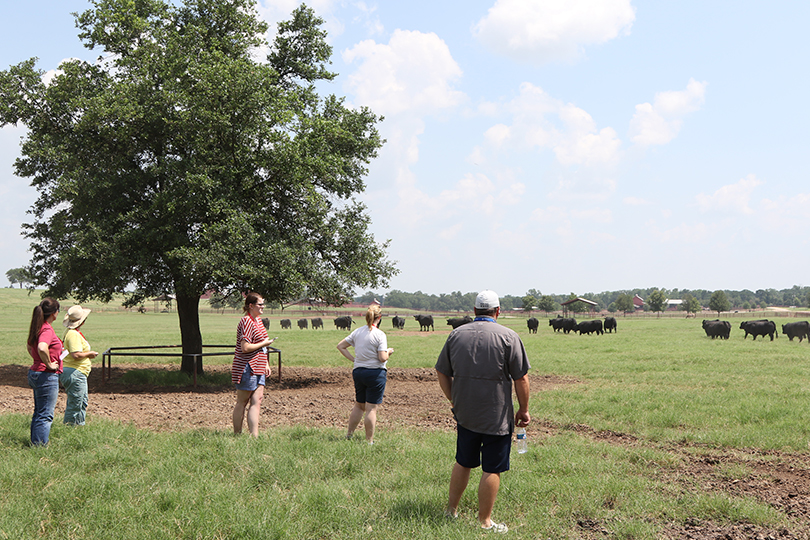
In Rogers, the teachers learned more about honey production at Walker Honey Farm. In operation since 1930, Walker Honey Farm sells a variety of raw honey and honey-based food products, beeswax soaps, candles and craft meads, drinks and wine.
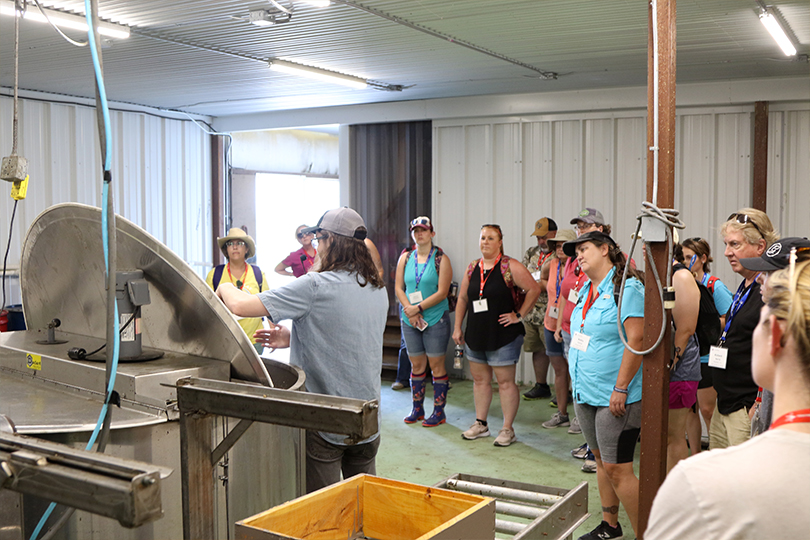
During the tour, teachers learned about pollinator gardens, apiary and beekeeping, large-scale honey production and how mead is made.
At TrueHarvest Farms in Belton, a hydroponic lettuce and leafy greens grower, teachers followed the greens process from seed to harvest to learn more about hydroponic food production systems.
At the 58,000-square-foot facility, lettuce is grown, packaged and shipped through a largely automated process to minimize opportunities for contamination while maintaining optimal water vapor retention for freshness.
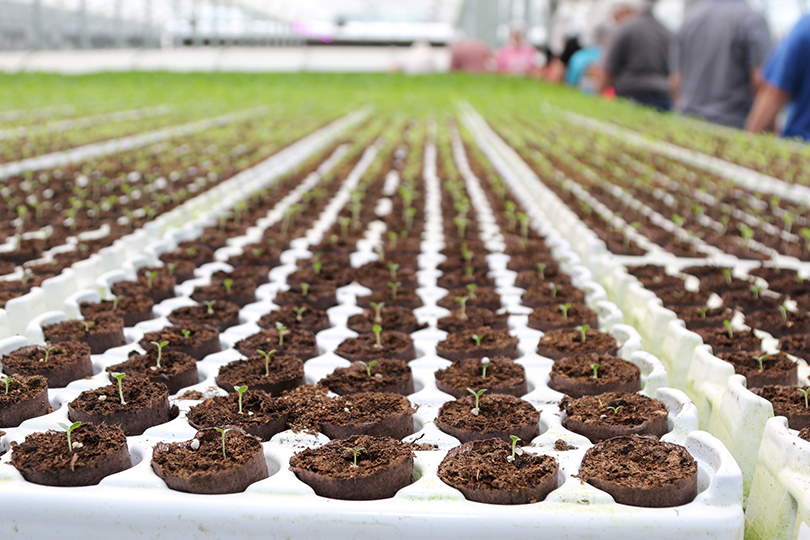
The group visited with John Evans, a fifth-generation farmer and rancher in Little River-Academy. Evans discussed his family operation’s evolution over the generations and how he used his background in technology to update some farming practices to increase yields and reduce inputs. The teachers explored Evans’ equipment barn, where they learned more about combines, plows, seed drills and other common farm equipment.
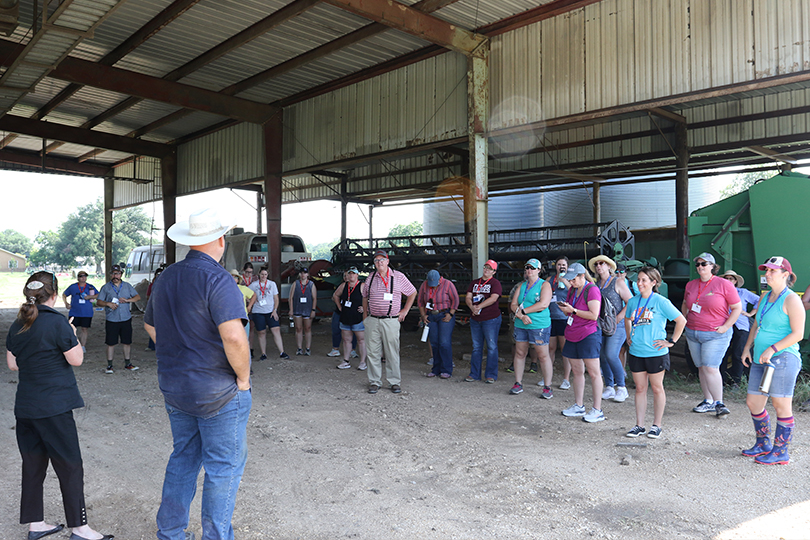
Hands-on workshops, activities
The group also participated in hands-on activities and lessons they can use in their classrooms, as well as learned from industry experts and fellow teachers.
Previous TFB Outstanding Ag in the Classroom Teacher winners Martha McLeod and Mary Beth Bauer discussed their experiences incorporating agriculture into the classroom and provided several lesson plans they developed using agricultural concepts.
In a session with Texas A&M AgriLife Extension Service Entomologist Sonja Swiger, the group learned more about insect classifications and life cycles. The lesson concluded with building insect habitats out of everyday objects. Swiger noted these habitats can easily be incorporated into classrooms at very low costs by using objects purchased at discount stores and having the students build them.
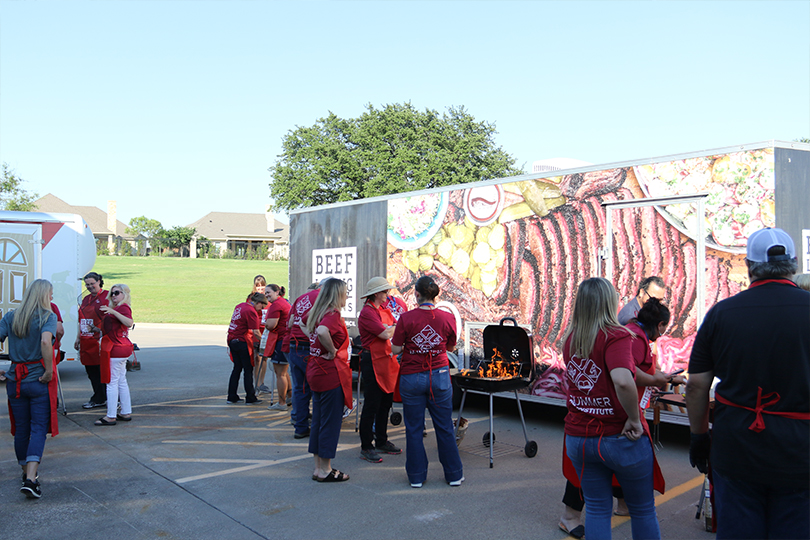
That evening, teachers were treated to an interactive demonstration by the Texas Beef Council, connecting the beef cattle industry from gate to plate. They pulled on aprons to grill their dinner while learning more about nutritional science and culinary arts.
Teachers received a lesson on plant propagation in the classroom, courtesy of the McLennan County Master Gardeners. They participated in a variety of activities to learn more about propagation and seed germination that can easily be replicated in their classrooms.
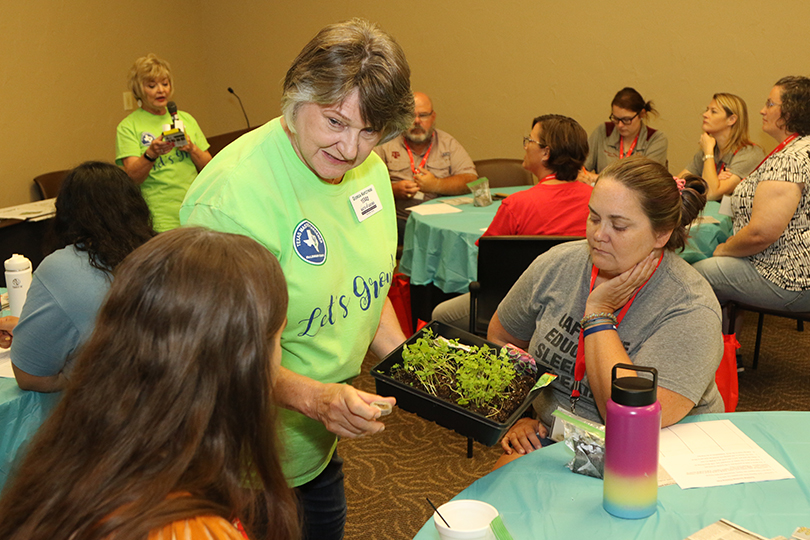
Other sessions included information from the Texas A&M Forest Service and a visit from Southwest Dairy Farmers’ mobile dairy barn to learn more about Texas dairy production.
Those from urban and rural areas alike enjoyed the immersive experience.
San Antonio teacher Janell Nihipali, who teachers middle school math, science and social studies, said she is happy to take what she has learned back to her students, many of whom live in apartment buildings where they don’t have access to farms or even their own lawn.
“I am super excited to show them there are things they can do with their families, even in their apartments, with plants and animals that they otherwise wouldn’t experience,” she said. “We have received so many good resources here this week. I am going to go back down to San Antonio to contact the Master Gardeners there to help me convince my administration to let us have a school garden.”
Teachers of subjects seemingly unconnected to agriculture—like business, computer science and digital media—left SAI with a new passion for sharing agriculture with their students.
“All of my professional development has been sitting in a room learning about viruses and cybersecurity and computer programming problems. Here, we got out and got hot, dirty and stinky—all the things that kids love. It’s the first time in my life I’ve done anything like this, and I’m hooked,” Muenster Public School teacher Richard Harris said. “I teach kids about viruses and worms in computers, and now I’m going to be able to integrate entomology and plant propagation into their lessons. We learned quite a bit about agribusiness this week. I’ve learned things about the dairy system that are highly technical, cotton gins, all the automated robotic tractors and plows and equipment. It’s been tremendous.”
Any revamped lessons will be pertinent to his students because they come from farm and ranch or rural families, he noted.
“We have mills that generate animal feed, and since I’ve actually been to one now, I can talk about ways they use technology and that sort of thing in an animal feed mill and make our classes more relevant,” he said. “I’m really excited about trying to embed the learning I’ve received this week.”
Even agricultural science teachers like Megan Walker were impressed by the breadth and depth of SAI in explaining agriculture to the educators. Walker, who teaches at the suburban Atascocita High School in Harris County, said she gained some valuable insights thanks to the institute’s interactive nature.
“Other workshops I’ve attended are very ‘sit and get,’ but this had a lot of hands-on components. Just like kids, we don’t learn by just sitting and listening. So, this experience is really great because you see a lot of different things in a short amount of time that makes you ask questions and want to learn more about what you’re seeing,” she said. “I’ve learned many new things and expanded on some knowledge I already had. In addition to learning from the speakers, I’ve heard from other disciplines and teachers on how they teach agriculture or want to teach about agriculture, which helps me think about how I can incorporate that with maybe my older students or teach my lower levels in a way they can understand.”
There’s room for agriculture in any subject and at every grade level, Walker noted.
“Participating in hands-on activities like the Summer Ag Institute helps teachers understand how to incorporate agriculture into any subject to make food and fiber production more understandable and relatable to students,” she said. “Our goal is to show teachers how accessible agriculture is, no matter the subject or grade, and to help them find ways to work that into their daily lessons and curriculum so they can help their students understand more about how our food gets from the field to tables around the globe. We hope SAI helps them do that, and we look forward to hosting more events throughout the year to bring agriculture to every classroom in Texas.”
Along with SAI, several regional Summer Agriculture Academies are hosted each year by TFB. For more information on the institute and other educational opportunities available, visit https://texasfarmbureau.org/aitc.
